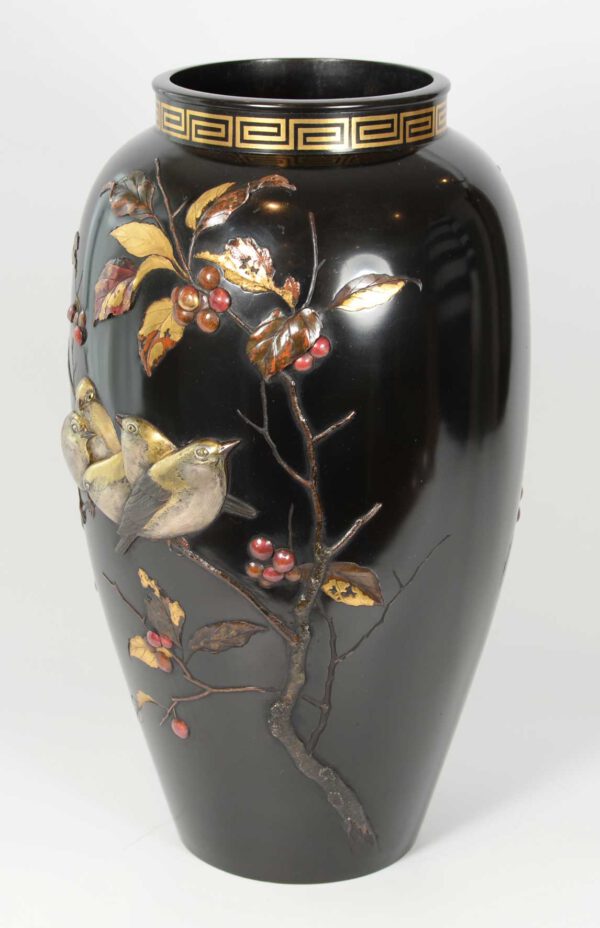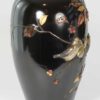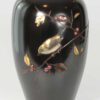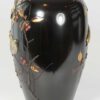As part of our Japanese works of art collection we are delighted to offer this heavy quality Meiji period 1868-1912, circa 1895 bronze and mixed metal onlaid vase by the highly regarded Imperial artist Suzuki Chokichi , his art name Kako , the heavily cast deep black shakudo patination of the vase is finely contrasted with a group of songbirds upon a tree decorated with exquisite mixed metal foliage and red berries, the autumnal patination of the leaves in particular are indicative of Kako’s work, the artistic skill leaves you in no doubt as to who the vase was made by, Chokichi excelled at the multi patination techniques used to portray decaying winter and autumnal foliage, the delightful birds each individually cast and hand chiseled before application to the body of the vase, each leaf and group of berries similarly cast and laid into the metal body prior to patination, the collar of the vase detailed in a gilt greek key geometric pattern, the vase fully signed with the signature of Suzuki Chokichi thus dating it to post 1891 , it is perhaps easy to understand why in 1896 this famous artist was given the unique honour of Imperial artist (Teishitsu Gigein ) , a great piece of mixed metalwork for your Japanese works of art collection .
Literature :
Suzuki Chokichi (Kako) was director , designer and lead artist of the government sponsored Kiryu Kosho Kaisha company until its closure in 1891 , his adventurous artistic ideas were reputedly not always well received by the government funded factory , they probably had one eye on commercial quantity and more repetitive works than Kako would have liked, he went on to produce many other individual high quality and now famous works housed around the worlds great collections and leading museums , including a monumental 2.8m koro surmounted by an eagle which resides in the Victoria and Albert museum, and arguably his most famous known work being a set of twelve mixed metal birds of prey, now rightfully resting in the Tokyo national museum .
Suzuki Chokichi’s work was eventually rewarded in 1896 when he was granted the rare accolade of becoming an Imperial artist ( Teishitsu Gigeiin ).
I am pleased to say his incredible artistic skills are eventually being recognized some 130 years later, by leading collectors of Japanese Meiji period metalworks.
Condition report :
Lovely condition throughout .
Approximate sizes :
Height : 11 3/4″ 30 cm
Depth : 7″ 17.5 cm
Weight : 4430 gms 4.43kg
Free worldwide delivery and a certificate of authenticity are included in the price of this item .
























